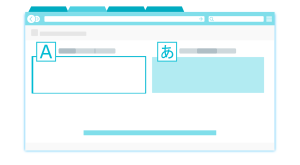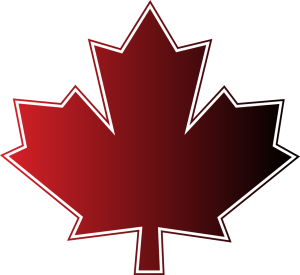5 Machine Translation Tools
 Machine translation (MT) software attempts to undertake a translation task from beginning to end. In other words, if a user provides a source text that needs to be translated into another language, the machine translation tool will take that source text and return a translated text in the selected target language. The resulting translation might not be perfect, but the tool will make an attempt and return a completed translation that the user can use as a draft or starting point. In some cases, this draft might be all that is required (e.g. if the user is just trying to get the gist of the message). Other times, the user might need a more polished text, in which case the user may decide to edit the machine translated text in order to improve it. It’s important for users to consider the purpose of the translation and to accept responsibility for producing a text that meets expectations, which may mean that it is necessary to edit the initial text produced by the machine translation system.
Machine translation (MT) software attempts to undertake a translation task from beginning to end. In other words, if a user provides a source text that needs to be translated into another language, the machine translation tool will take that source text and return a translated text in the selected target language. The resulting translation might not be perfect, but the tool will make an attempt and return a completed translation that the user can use as a draft or starting point. In some cases, this draft might be all that is required (e.g. if the user is just trying to get the gist of the message). Other times, the user might need a more polished text, in which case the user may decide to edit the machine translated text in order to improve it. It’s important for users to consider the purpose of the translation and to accept responsibility for producing a text that meets expectations, which may mean that it is necessary to edit the initial text produced by the machine translation system.
Can I use MT for courses? It depends! Courses have different learning objectives. In a geography course, demonstrating that you understand the main concepts might be a key objective, so if MT can help you to express those concepts more clearly, that’s may be a good use of the tool. But in a language course, one objective might be to show that you have mastered a particular grammatical feature, so the instructor might want you to demonstrate this without using MT. If you are unsure whether MT is permitted, ask your instructor, and be transparent about using MT (e.g. add a note explaining where and how you used MT).
Because the machine translation system is doing the translation work “behind the scenes”, the user interface for a free online machine translation system is usually quite simple. First, a user selects both the source (or start) language and the target (or end) language. Next, the user types or copies the text that needs to be translated into the box under the source language. The machine translation tool will then produce a translation of that text in the target language.
Google Translate is probably the best known and most widely used free online machine translation system; however, this system has not (yet) been customized for Canadian English or French. [UPDATE: In October 2024, Google Translate added the option to choose “French (Canada)”]. However, there are two other free online machine translation systems – TradooIT Translator and Microsoft Bing Translator – which offer some degree of customization for Canadian language varieties. Before exploring these two tools in more detail, let’s first consider some of the basics of how they work in order to better understand how it has been possible to customize these tools for Canadian versions of English and French.
Google Translate, TradooIT and Microsoft Bing Translator are examples of neural machine translation (NMT) systems. NMT is a very recent approach to machine translation that employs artificial intelligence-based machine learning techniques. The earliest approach to machine translation (dating back to the period after World War II) was known as rule-based machine translation (RBMT) because it tried to get computers to process language in a way that resembled some aspects of how people process language. Therefore, these RBMT systems were supplied with large bilingual dictionaries and an extensive set of grammar rules, and a different dictionary and set of grammar rules had to be created for each language pair. In other words, an RBMT system that was developed to work with English and French could not be adapted easily to work with Arabic and Russian, for example. To enable the system to work with different languages, new dictionaries and grammar rules had to be programmed, which represented a considerable amount of work. What’s more, these RBMT systems had limited success because people actually use much more than grammar and vocabulary when communicating. To communicate successfully, people also make extensive use of context and real-world knowledge to interpret phrases that might be ambiguous. However, computers don’t have access to real-world knowledge, so they are not well equipped to interpret natural language, which is inherently ambiguous.
Given the limited success of RBMT, developers decided to try new approach that did not rely on linguistics and world knowledge but which instead allowed computers to do what they are good at: pattern matching and number crunching. This led to the development of corpus-based approaches, including the most recent approach known as neural machine translation. In NMT, the developers provide the system with an extremely large bilingual corpus containing source texts and their translations that have been produced previously (usually by professional translators). The computer can consult the previous translations to find patterns (e.g. X was previously translated by Y ninety-nine times out of one hundred) and “learn” from these examples how to translate new source texts. Of course, this explanation is very simplified, but the essential thing to note is that the machine translation system learns from the very large number of examples that have been provided.
This means that it’s much easier to create a tool that can translate different languages because the main thing that is needed is a new bilingual corpus that the system can consult and learn from. By carefully selecting what is included in the corpus, it is possible to teach the system different things, such as a different language variety. Remember, however, that in order to produce high-quality results, it is necessary to have an extremely large corpus (i.e. billions of pages of text), which may be challenging to compile if a particular language or language variety is not widely used.
Let’s have a look at some free online NMT systems that have succeeded in using customized corpora of Canadian texts to allow users to generate translations in Canadian English or Canadian French.
TradooIT Translator
The TradooIT tool suite was developed by Simon McDuff, founder of Okidoo Inc. In addition to the bilingual concordancer described in a previous section, the TradooIT tool suite also contains a free online neural machine translation tool. According to the TradooIT website, this neural machine translation system has been trained primarily using Canadian government texts and is thus adapted to the Canadian vocabulary. What’s more, this tool works for both Canadian English and Canadian French. Indeed, this tool is dedicated to these particular language varieties and no other language options are available. It is worth noting that since the tool has been trained using mainly government texts, it may not perform as well on other types of texts. Remember that NMT systems learn by looking at the examples in the corpus. Different types of texts have different characteristics, so a machine translation tool that is trained on one type of text (e.g. government texts) may not be well equipped to handle other types of texts (e.g. recipes, textbooks, literature).
Like most free online machine translation tools, the interface for TradooIT Translate is self-evident and the tool is easy to use. Simply paste the source text in the left-hand box and then view the translated text in the right-hand box.
Try it! Can TradooIT Translate produce Canadian language? 
- Go to the TradooIT Translate website.
- Select French as the source language and English as the target language.
- Copy/paste the following text into the source text box on the left:
De quelle couleur est leur médaille olympique ? Les plongeuses canadiennes ont gagné la médaille d’argent à l’épreuve féminine du tremplin de 3 mètres synchronisé.
- Look at the proposed English-language target text in the right-hand box.*
-
- Does the spelling reflect Canadian English’s preferred blend of US and UK options?
- The words colour and metre reflect the –our and –re endings that Canadian English has inherited from UK English.
- The term synchronized reflects the –ize preference of Canadian English that has been influenced by US English.
- Does the spelling reflect Canadian English’s preferred blend of US and UK options?
*Note: NMT systems are constantly learning, so the results produced may differ from the results that were shown at the time that this resource was created.
Microsoft Bing Translator
Although Microsoft Bing Translator is not a Canadian product, it does offer an option that is not found in most other well-known free online machine translation tools, which is the option to select “French (Canada)” as a language, rather than only choosing “French”. In other words, Microsoft has trained a version of their machine translation system using a corpus of texts that have been written in Canadian French. As a result, the translations that are produced when the “French (Canada)” option is selected will be in a version of French that is more typically used in Canada.
Try it! Can Microsoft Bing Translator produce Canadian French? 
- Go to the Microsoft Bing Translator website.
- Select English as the source language and French (Canada) as the target language.
- Copy/paste the following text into the source text box on the left:
Soccer is a very popular sport. Sometimes kids even play in empty parking lots.
- Choose “French” as the target language
- Look at the proposed target text in the right-hand box.*
-
- Notice that soccer has been translated as football,
- See that parking lots has been translated as parkings.
- Change the target language to French (Canada) and watch how the translation changes.
-
- Now soccer has been translated as soccer.
- This time, parking lots has been translated as stationnements.
*Note: NMT systems are constantly learning, so the results produced may differ from the results that were shown at the time that this resource was created.
Unfortunately, Microsoft Bing Translator does not have a comparable option for Canadian English. Instead, “English” is the only option and there are currently no regional varieties available.


